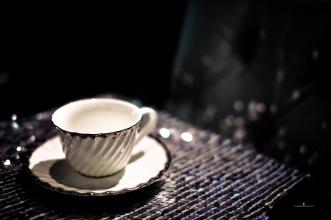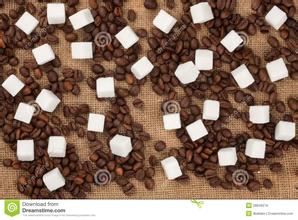How to make a cup of coffee soul Espresso?
Espresso, the full name of espresso, is also known as "the soul of coffee". It has a strong taste, thick texture and unique flavor. It is no exaggeration to say that Espresso is the soul of all espresso.
Espresso stands for "on the spur of the moment for you" in Italian, and it translates into Chinese as "presented to you at this moment". So, how did the perfect Espresso that you sent to your lips come into being?
Doing a good Espresso is the basic skill of a barista: the thickness of grinding, the pressure of the machine, the temperature of steam, the time of extraction, and there can be no mistakes in every link in order to create a cup of gold Espresso with strong aroma.
Step 1
After deep roasting, coffee beans, like years of aging, completely release their inner fragrance at the moment of grinding into a very fine powder.
Step 2
No matter how well the coffee is brewed, as long as it is poured into a cold cup, the aroma will dissipate immediately. Warming the coffee cup in advance can better brew the aroma of coffee. So before starting to make Espresso, COSTA baristas use hot water to warm their cups.
Step 3
Despite the calm and elegant picture of coffee extraction, the calm behind it is full of violent and exciting plots! Coffee releases the equivalent of nine atmospheric pressure, about the same weight as an adult, acting on a very fine coffee powder, instantly grabbing away the most essential ingredients in the powder. At the moment of pouring into the coffee cup, the strong aroma rushed to the brain from the nasal cavity.
Step 4
Warm foam, dazzling golden brown color, 3mm thick flavor oil, strong and lasting fragrance. It has all the ingredients needed for a perfect Espresso. Senior coffee lovers who love Espresso will go into COSTA and order a cup of Espresso in the morning, savor it carefully, and wait for the strong taste to occupy all the taste nerves.
Of course, those who order Espresso are often experienced coffee gluttons! If you are still a coffee rookie, you might as well start with the other four classic Espresso-based coffees. Whether it is rich Cotadot, creamy latte, dense cappuccino, or full-bodied white coffee, you can fully appreciate the beauty of espresso.
When you have tasted enough coffee and learned more about coffee, if you become a coffee glutton, you might as well taste the Espresso, which is known as the "soul of coffee", or even make your own cup.

Important Notice :
前街咖啡 FrontStreet Coffee has moved to new addredd:
FrontStreet Coffee Address: 315,Donghua East Road,GuangZhou
Tel:020 38364473
- Prev

With the continuous change of domestic catering environment, how to break through the tight encirclement of ordinary coffee beans
For a cup of strong espresso, high-quality beans are essential. Caffe Pascucci is very strict with coffee beans, checking everything from the selection of coffee beans to baking. In terms of selection, Caffe Pascucci coffee beans mainly come from Haiti, which has a good climate. Moreover, local people do not use fungicides, insecticides and chemical fertilizers in the planting process, so that
- Next

The role of crema in Italian espresso extraction time practice Variety producing area
The extraction time of crema in espresso may be a little misunderstood here, because in a single cup, a 15-second coffee and a 30-second coffee look the same, but I guarantee that the colors of the two are absolutely different, if you don't believe it, please drop a drop of coffee on the white paper, so the lighter the Crema, the lighter the coffee, the dissolved in the coffee.
Related
- Beginners will see the "Coffee pull flower" guide!
- What is the difference between ice blog purified milk and ordinary milk coffee?
- Why is the Philippines the largest producer of crops in Liberia?
- For coffee extraction, should the fine powder be retained?
- How does extracted espresso fill pressed powder? How much strength does it take to press the powder?
- How to make jasmine cold extract coffee? Is the jasmine + latte good?
- Will this little toy really make the coffee taste better? How does Lily Drip affect coffee extraction?
- Will the action of slapping the filter cup also affect coffee extraction?
- What's the difference between powder-to-water ratio and powder-to-liquid ratio?
- What is the Ethiopian local species? What does it have to do with Heirloom native species?

